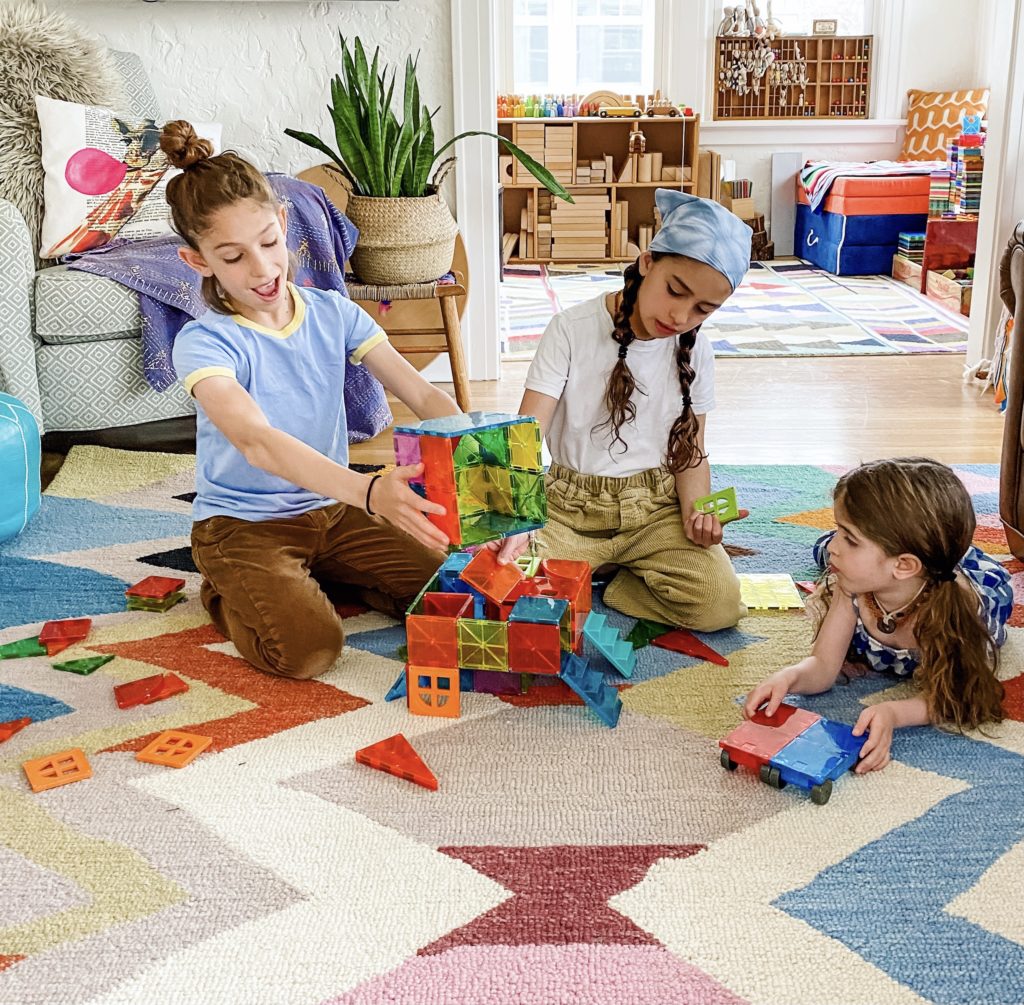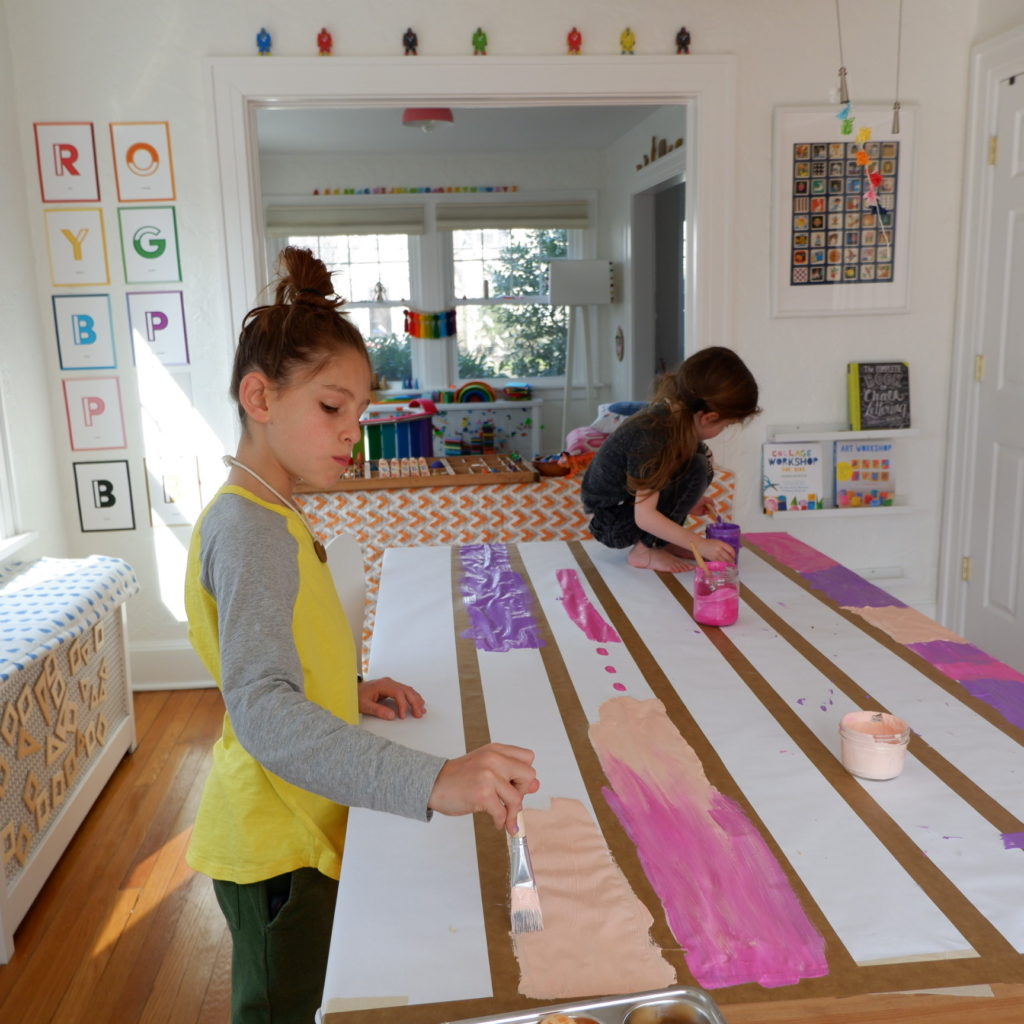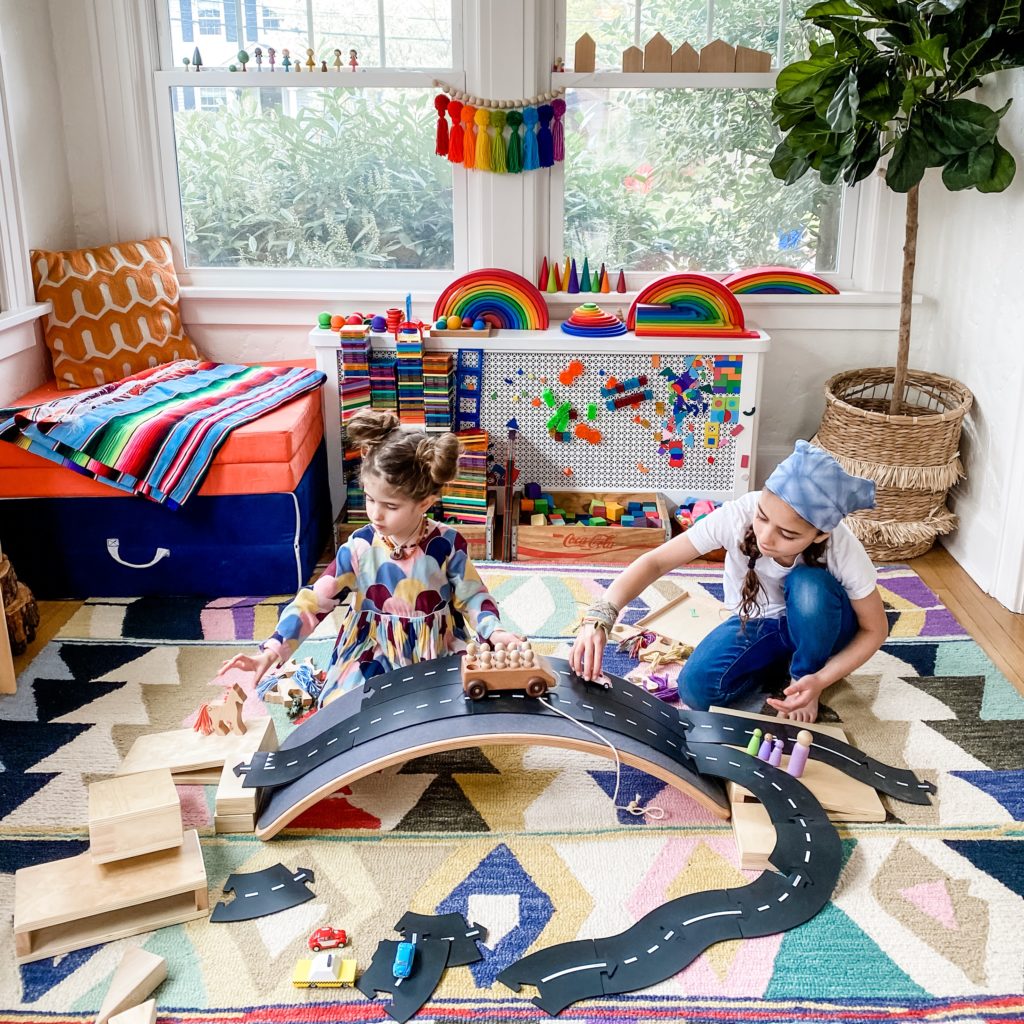The weather outside is crummy, the kids are nagging, and it’s only 8:45 AM—sound familiar? When you’re at home, and there’s no plan, kids catapult from feeling bored one minute to acting out the next. To help you reframe time at home from whining to wins, we talked to NJMOMpreneur, Lizzie Assa, MsED, a Parenting Strategist and Play Expert from The Workspace For Children. Read on for her tips on keeping it real and the benefits of quiet time when it comes to beating the playtime winter blahs. (featured photo credit: The Workspace For Children)
How can parents deal with days off or schedule changes?
Constant changes are impossible to maintain, but there are ways to help kids regulate them. One idea is to map out the next three days for kids, perhaps with a calendar. Put a sticker or draw a picture of school or whatever they have that day and give them a sense of what’s happening and what’s going on to provide them with control. We take for granted what kids know and don’t know when it comes to changes. But even with knowing their schedule, things will change, and kids need to feel like they are in control, not out of it.
What can you do for kids who are acting out when they are stuck inside?
Sometimes it’s hard to realize kids need movement to regulate their behavior, so before you think their behavior is something we need to correct, they might just be communicating that they need movement. Even 3-4 minutes of playing Simon Says or an obstacle course can help. Sensory input is also important—hug them in a tight squeeze, scratch their back, or let them rearrange the kitchen chairs at the table because the heavy work movement is a good way to regulate behavior. You can also give them the bottom pantry to take apart and rearrange, use painter’s tape to make a balance beam on the floor, or get a good belly scooter—they are great for indoor play in winter to challenge and move the body.
Why is self-care important for parents, and how can they get that time when life is so busy?
Parents can’t pour from an empty bucket, so if you find yourself snapping at the kids and they are nagging, it’s easy to think that it’s our kids’ behavior. But we need to take pressure off of ourselves when our kids are not listening. It can help to stop for a bit, sitting your kids down and saying, “Hey, it’s been hard lately. Let’s take 10 minutes for you and me.” When they feel connected, they will give you the space you need.
 Magnatiles are always a great idea when it comes to indoor entertainment.
Magnatiles are always a great idea when it comes to indoor entertainment.
How do you create quiet time for kids?
The process of quiet time can start with intentionally giving them those 10 minutes of connection time, then setting them up with their work so you can do yours. A few Magnatiles with their Daniel Tiger figurines arranged unexpectedly can work or think about their interests and what’s important to them. If trucks interest them, go with that. You don’t want it complicated where they can keep asking for help. The amount of quiet time will increase as you work with your kids and blend it into your daily routine.
What tweaks can parents add to their daily routine with their kids?
I tell parents to think about their home as another set of hands if their kids are always asking for snacks, tissues, and more. Set up an environment to change the hooks down low to hang their things or put “yes” snacks down low. It empowers kids to be active participants in life when you step away, making for a higher-functioning family unit.
 Painting on a huge piece of paper is a great way to encourage creativity for kids while not requiring parents to have a lot of supplies on hand.
Painting on a huge piece of paper is a great way to encourage creativity for kids while not requiring parents to have a lot of supplies on hand.
Do you have any art activity recommendations for kids?
Parents can feel taxed with some art projects, but it takes the pressure off if you keep it simple. I love a big roll of paper. Put the roll on the ground and trace their body or draw hopscotch on it. It’s a low amount of work for parents to get kids into the habit of creating. Just keep basic supplies on hand so that they can create independently. Here are more toddler art tools to keep on hand.
Since you’ve been using these techniques, what changes have you seen in your kids over time?
The impact of quiet time has allowed them to get deep into their interests. My son went from airplane books and toys to studying to become a pilot. Give them room to think and figure out who they are—quiet time gives them time to practice hearing their own thoughts.
For more information on Lizzie Assa, MsED, and The Workspace for Children, check out her website, Instagram, and Facebook page.
Become an NJMOM Insider! For all the best things to do with your family around New Jersey, sign up for our weekly newsletter delivered right to your inbox each week, and don’t forget to tag your photos #NJMOM and @njmom for a chance to be featured on our social media.








